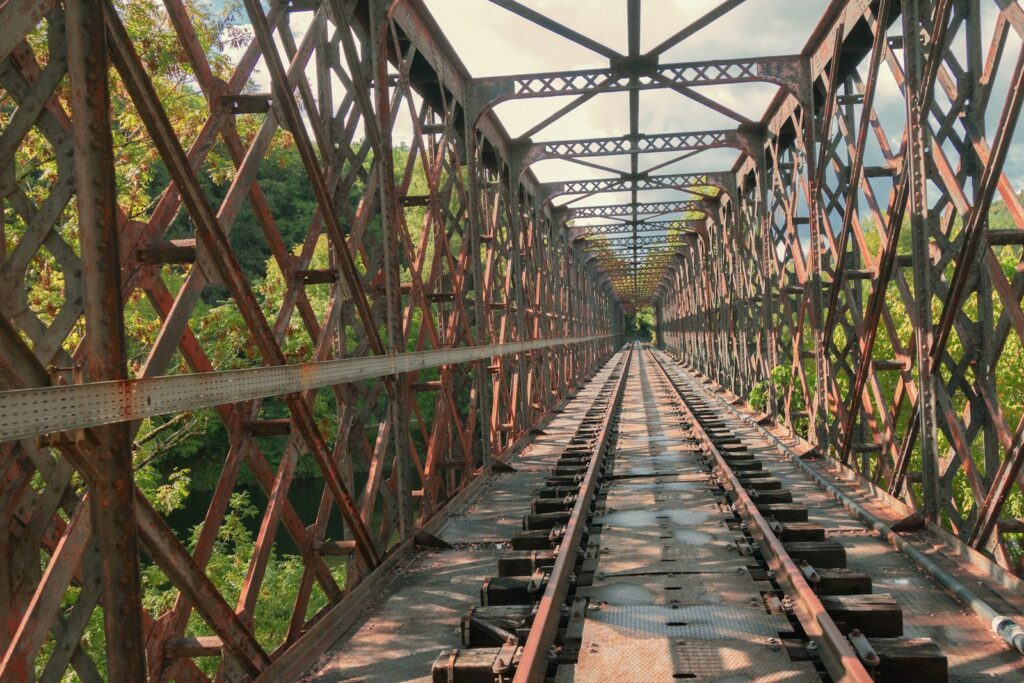In the realm of modern construction and manufacturing, structural steel emerges as a cornerstone, pivotal for its robustness and versatility. This article embarks on an expedition to unveil the multifaceted benefits of structural steel fabrication. As we navigate through this exploration, it is essential to spotlight Metro Steel, a frontrunner in delivering top-tier structural steel solutions. Their expertise and innovation in the field stand testament to the transformative power of structural steel in shaping the skyline of today’s world.
Understanding Structural Steel Fabrication
Structural steel fabrication is an intricate process that plays a pivotal role in the construction industry. This craft transforms raw steel into the skeleton of the structures that define our cities and landscapes. But what exactly does this process entail, and why is it so crucial to modern construction?
At its heart, structural steel fabrication involves a series of steps: cutting, bending, and assembling steel to create the custom shapes and sizes needed for construction projects. The cutting phase uses various tools and techniques, such as shearing, sawing, and laser cutting, to precisely cut steel into desired lengths. Bending shapes the steel into angles and curves, often using press brakes, folding machines, or tube benders. Finally, the assembly stage involves welding, bolting, or riveting the steel pieces together to form complete structures.
This process is not static; it has evolved significantly since the Industrial Revolution, adapting to advancements in technology and shifts in architectural demands. The evolution of steel fabrication is a testament to the material’s flexibility and enduring relevance in construction. Steel’s capacity for transformation—from raw material to the backbone of architectural marvels—underscores its integral role in building the world around us.
The Strength and Durability of Steel
Steel’s narrative is deeply intertwined with its physical properties of strength and durability, characteristics that have cemented its position as a preferred material in construction. The superiority of steel over traditional materials like concrete and wood is not just in its strength but also in its resilience against environmental challenges. Steel’s alloy composition grants it the ability to withstand severe weather conditions, seismic activities, and corrosion over time, ensuring the longevity of the structures it supports.
The durability of steel is not an abstract quality but is evidenced in the real world by structures that have withstood the ravages of time and nature. From skyscrapers that touch the clouds to bridges that span vast distances, steel’s enduring nature is visible in some of the most iconic and critical infrastructure around the globe. This resilience is not only a matter of safety and reliability but also contributes to the aesthetic appeal of steel structures, allowing them to maintain their beauty and integrity over decades.
Cost-effectiveness of Steel Fabrication
When considering the cost-effectiveness of building materials, structural steel emerges as a frontrunner, offering economic advantages that extend beyond the initial construction phase. The upfront costs of steel are often balanced out by the savings realised over the lifecycle of a building. Steel’s durability means reduced maintenance and repair costs, while its resilience translates to a longer lifespan for structures.
The fabrication process itself is a key factor in steel’s cost efficiency. Modern steel fabrication techniques are designed for maximum efficiency, reducing waste and saving time. The ability to prefabricate components in a controlled factory setting streamlines the construction process, reducing labour costs and minimising delays on site. Furthermore, the precision of steel fabrication means fewer errors and adjustments during construction, contributing to a smoother, more cost-effective building process.
In addition to these direct financial benefits, the flexibility of steel allows for adaptive reuse of structures, further enhancing its cost-effectiveness. Buildings designed with steel can be easily modified or expanded, adapting to new uses without the need for complete reconstruction. This adaptability not only saves on costs but also supports sustainable construction practices by extending the usable life of steel structures.
Overall, the cost-effectiveness of steel fabrication is a multifaceted benefit that makes it an attractive choice for a wide range of construction projects, from commercial buildings and industrial facilities to bridges and residential homes.
Sustainability and Environmental Benefits
In the modern narrative of construction, sustainability plays a pivotal role, with structural steel leading the charge towards greener building solutions. The environmental prowess of structural steel is underscored by its remarkable recyclability – it stands as one of the most recyclable materials on the planet. This characteristic ensures that steel used in construction can be repurposed at the end of its lifecycle, reducing the need for new raw materials and minimising waste.
Furthermore, the production of structural steel has seen significant advancements in energy efficiency. Modern steel mills are paragons of sustainability, utilising electric arc furnaces that can recycle steel using a fraction of the energy required in traditional steelmaking processes. This energy efficiency extends throughout the lifecycle of a steel structure, from production and construction to demolition and recycling, establishing steel as an eco-conscious choice for builders and developers.
The environmental benefits of structural steel fabrication extend beyond recyclability and energy efficiency. Steel structures contribute to sustainable building practices through their longevity and durability, requiring fewer resources for maintenance and repair over time. Additionally, the lightweight nature of steel reduces the environmental impact during transportation, as lighter loads result in lower emissions.
These environmental attributes of structural steel fabrication make it an ideal material for projects aiming to achieve green building certifications, such as LEED (Leadership in Energy and Environmental Design). By choosing structural steel, builders can significantly contribute to the construction of buildings that are not only structurally sound but also environmentally responsible.
Flexibility in Design and Innovation
The architectural landscape is continually evolving, with designers seeking materials that allow for creative freedom and innovation. Structural steel, with its inherent versatility, has become a favourite among architects and engineers for its ability to realise complex and unique designs. The strength-to-weight ratio of steel is a key factor in this flexibility, enabling the construction of large spans and tall structures without the need for bulky supports. This opens up endless possibilities for design, from expansive open interiors to intricate, sculptural exteriors.
Steel’s adaptability extends to its compatibility with other materials, allowing for hybrid constructions that combine the best attributes of each. Whether it’s glass for aesthetic transparency, concrete for added mass, or timber for a touch of warmth, steel can be integrated seamlessly to meet both the aesthetic and functional requirements of a project.
Moreover, the precision of steel fabrication means that components can be engineered to exact specifications before arriving on site, facilitating the realisation of designs that might otherwise be constrained by the limitations of traditional construction methods. This precision, coupled with steel’s ability to be moulded into virtually any shape, empowers architects to push the boundaries of innovation, crafting buildings that are not only functional but also emblematic of architectural progress.
Speed of Construction and Installation Ease
The pace of modern construction projects often demands rapid completion without compromising on quality. Structural steel fabrication meets this demand through the use of prefabricated components, which are engineered and assembled in controlled factory environments. This prefabrication process not only ensures high precision and quality but also significantly reduces the time required on site for assembly.
The speed of construction is further enhanced by steel’s ease of installation. With components designed to fit together seamlessly, the need for on-site adjustments is minimised, streamlining the construction process. This efficiency is particularly valuable in urban environments or challenging site conditions, where minimising construction time can lead to reduced labour costs and less disruption.
Additionally, the lightweight nature of steel compared to traditional construction materials like concrete means that less time and resources are required for foundation preparation, further accelerating the construction timeline. This speed and efficiency make structural steel an attractive option for projects with tight deadlines or those looking to minimise the impact of construction activities on surrounding areas.
Fire Resistance and Safety Features
Safety is paramount in construction, with fire resistance being a critical consideration in the choice of building materials. Structural steel offers inherent fire-resistant properties, contributing significantly to the overall safety of steel-structured buildings. While steel itself is not fireproof, it performs predictably in high-temperature environments, retaining its structural integrity longer than many alternative materials.
The fire resistance of structural steel can be further enhanced through protective coatings and treatments, such as fire-resistant paint or encasements. These measures increase the material’s resistance to high temperatures, providing additional time for evacuation and fire-fighting efforts in the event of a fire.
Moreover, steel’s durability and resistance to pests, mould, and rot contribute to a safer and healthier environment for occupants. Unlike wood, steel does not warp, split, or swell, ensuring that the structural integrity of the building remains intact over time. This long-term stability is essential for minimising risks and ensuring the safety and well-being of those who live and work in steel-structure buildings.
Conclusion
Embarking on this journey through the realm of structural steel fabrication, we’ve uncovered its myriad benefits – from enduring strength and cost efficiency to environmental sustainability and aesthetic flexibility. Metro Steel stands as a beacon in this industry, embodying the pinnacle of quality and innovation. For those poised to embark on construction ventures, the choice is clear. Engage with Metro Steel and invest in the unmatched advantages of structural steel, ensuring your projects are not only built for today but engineered for tomorrow.
 Working Hours - Mon – Fri 7:00 AM – 4:00 PM
Working Hours - Mon – Fri 7:00 AM – 4:00 PM Talk to an Expert (07) 3204 1000
Talk to an Expert (07) 3204 1000
